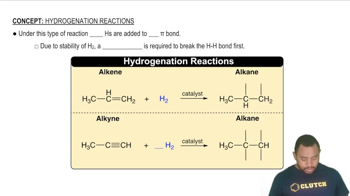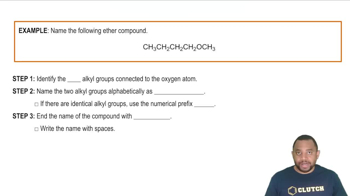Here are the essential concepts you must grasp in order to answer the question correctly.
Hydrogen Bonding
Hydrogen bonding is a type of intermolecular force that occurs when a hydrogen atom covalently bonded to a highly electronegative atom, such as oxygen or nitrogen, experiences an attraction to another electronegative atom. This interaction is crucial in determining the physical properties of substances, such as boiling and melting points. In the context of dimethyl ether and water, hydrogen bonds form between the hydrogen atoms of water and the oxygen atom of dimethyl ether.
Recommended video:
Molecular Structure of Dimethyl Ether
Dimethyl ether (C2H6O) is an organic compound with a simple structure consisting of two methyl groups (–CH3) attached to an oxygen atom. Its molecular geometry is bent due to the presence of lone pairs on the oxygen, which influences its polarity and ability to engage in hydrogen bonding. Understanding its structure is essential for predicting how it interacts with water and other polar solvents.
Recommended video:
Polarity and Solubility
Polarity refers to the distribution of electrical charge over the atoms in a molecule, which affects how molecules interact with each other. Polar molecules, like water and dimethyl ether, can dissolve in each other due to their ability to form hydrogen bonds. This concept is vital for understanding why dimethyl ether can mix with water and how the hydrogen bonding illustrated in the question occurs.
Recommended video:



 Verified step by step guidance
Verified step by step guidance


